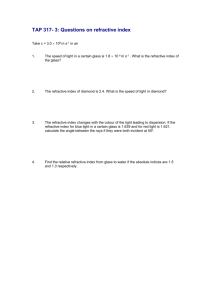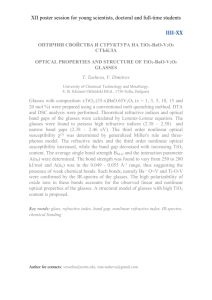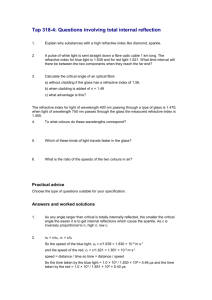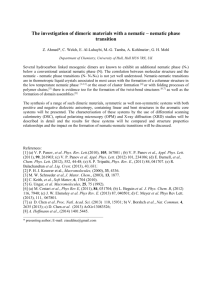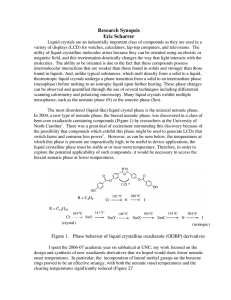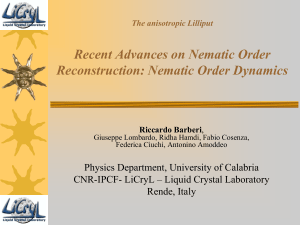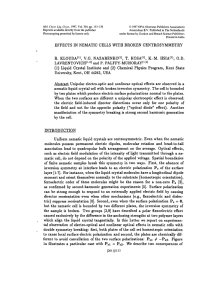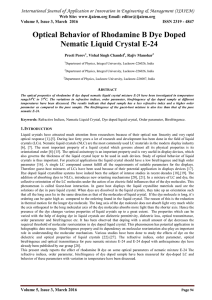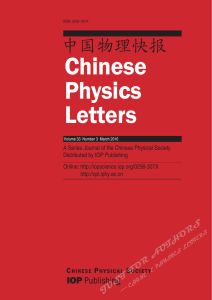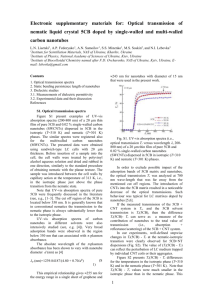Refractive index measurements in a biaxial nematic
advertisement
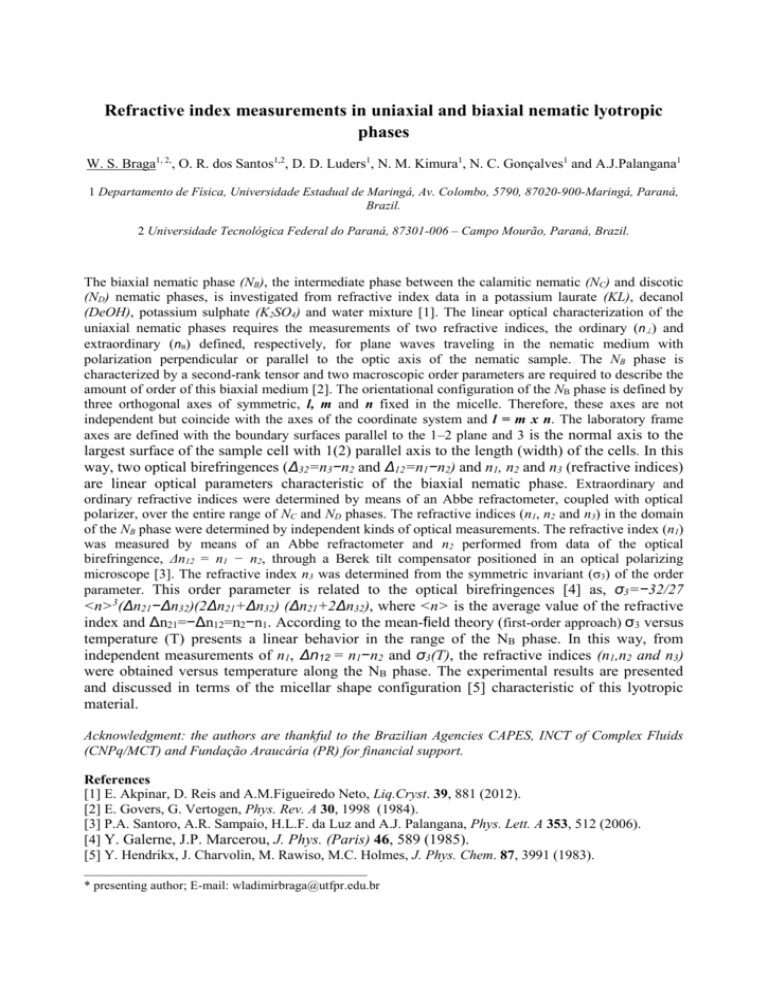
Refractive index measurements in uniaxial and biaxial nematic lyotropic phases W. S. Braga1, 2,, O. R. dos Santos1,2, D. D. Luders1, N. M. Kimura1, N. C. Gonçalves1 and A.J.Palangana1 1 Departamento de Física, Universidade Estadual de Maringá, Av. Colombo, 5790, 87020-900-Maringá, Paraná, Brazil. 2 Universidade Tecnológica Federal do Paraná, 87301-006 – Campo Mourão, Paraná, Brazil. The biaxial nematic phase (NB), the intermediate phase between the calamitic nematic (NC) and discotic (ND) nematic phases, is investigated from refractive index data in a potassium laurate (KL), decanol (DeOH), potassium sulphate (K2SO4) and water mixture [1]. The linear optical characterization of the uniaxial nematic phases requires the measurements of two refractive indices, the ordinary (n) and extraordinary (n )װdefined, respectively, for plane waves traveling in the nematic medium with polarization perpendicular or parallel to the optic axis of the nematic sample. The NB phase is characterized by a second-rank tensor and two macroscopic order parameters are required to describe the amount of order of this biaxial medium [2]. The orientational configuration of the NB phase is defined by three orthogonal axes of symmetric, l, m and n fixed in the micelle. Therefore, these axes are not independent but coincide with the axes of the coordinate system and l = m x n. The laboratory frame axes are defined with the boundary surfaces parallel to the 1–2 plane and 3 is the normal axis to the largest surface of the sample cell with 1(2) parallel axis to the length (width) of the cells. In this way, two optical birefringences (Δ32=n3−n2 and Δ12=n1−n2) and n1, n2 and n3 (refractive indices) are linear optical parameters characteristic of the biaxial nematic phase. Extraordinary and ordinary refractive indices were determined by means of an Abbe refractometer, coupled with optical polarizer, over the entire range of NC and ND phases. The refractive indices (n1, n2 and n3) in the domain of the NB phase were determined by independent kinds of optical measurements. The refractive index (n1) was measured by means of an Abbe refractometer and n2 performed from data of the optical birefringence, Δn12 = n1 − n2, through a Berek tilt compensator positioned in an optical polarizing microscope [3]. The refractive index n3 was determined from the symmetric invariant (σ3) of the order parameter. This order parameter is related to the optical birefringences [4] as, σ3=−32/27 <n>3(Δn21−Δn32)(2Δn21+Δn32) (Δn21+2Δn32), where <n> is the average value of the refractive index and Δn21=−Δn12=n2−n1. According to the mean-field theory (first-order approach) σ3 versus temperature (T) presents a linear behavior in the range of the NB phase. In this way, from independent measurements of n1, Δn12 = n1−n2 and σ3(T), the refractive indices (n1,n2 and n3) were obtained versus temperature along the NB phase. The experimental results are presented and discussed in terms of the micellar shape configuration [5] characteristic of this lyotropic material. Acknowledgment: the authors are thankful to the Brazilian Agencies CAPES, INCT of Complex Fluids (CNPq/MCT) and Fundação Araucária (PR) for financial support. References [1] E. Akpinar, D. Reis and A.M.Figueiredo Neto, Liq.Cryst. 39, 881 (2012). [2] E. Govers, G. Vertogen, Phys. Rev. A 30, 1998 (1984). [3] P.A. Santoro, A.R. Sampaio, H.L.F. da Luz and A.J. Palangana, Phys. Lett. A 353, 512 (2006). [4] Y. Galerne, J.P. Marcerou, J. Phys. (Paris) 46, 589 (1985). [5] Y. Hendrikx, J. Charvolin, M. Rawiso, M.C. Holmes, J. Phys. Chem. 87, 3991 (1983). ____________________________________________ * presenting author; E-mail: wladimirbraga@utfpr.edu.br


